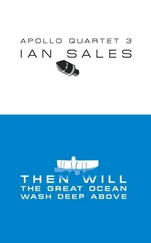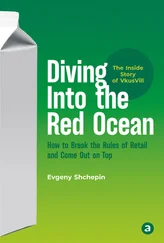Joseph J. Torres - Life in the Open Ocean
Здесь есть возможность читать онлайн «Joseph J. Torres - Life in the Open Ocean» — ознакомительный отрывок электронной книги совершенно бесплатно, а после прочтения отрывка купить полную версию. В некоторых случаях можно слушать аудио, скачать через торрент в формате fb2 и присутствует краткое содержание. Жанр: unrecognised, на английском языке. Описание произведения, (предисловие) а так же отзывы посетителей доступны на портале библиотеки ЛибКат.
- Название:Life in the Open Ocean
- Автор:
- Жанр:
- Год:неизвестен
- ISBN:нет данных
- Рейтинг книги:5 / 5. Голосов: 1
-
Избранное:Добавить в избранное
- Отзывы:
-
Ваша оценка:
- 100
- 1
- 2
- 3
- 4
- 5
Life in the Open Ocean: краткое содержание, описание и аннотация
Предлагаем к чтению аннотацию, описание, краткое содержание или предисловие (зависит от того, что написал сам автор книги «Life in the Open Ocean»). Если вы не нашли необходимую информацию о книге — напишите в комментариях, мы постараемся отыскать её.
Life in the Open Ocean: The Biology of Pelagic Species
Life in the Open Ocean: The Biology of Pelagic Species
Life in the Open Ocean — читать онлайн ознакомительный отрывок
Ниже представлен текст книги, разбитый по страницам. Система сохранения места последней прочитанной страницы, позволяет с удобством читать онлайн бесплатно книгу «Life in the Open Ocean», без необходимости каждый раз заново искать на чём Вы остановились. Поставьте закладку, и сможете в любой момент перейти на страницу, на которой закончили чтение.
Интервал:
Закладка:
High concentrations of medusae can be achieved by physical aggregating mechanisms or by rapid reproduction in place to form a true bloom (Graham et al. 2001). Physical cues that have been implicated in high concentrations of medusae include light‐mediated migrations such as diurnal vertical migration and aggregations associated with discontinuities in temperature, salinity, and density (pycnoclines) in the vertical plane. The reasons for accumulation of medusae at pycnoclines likely include higher concentrations of prey at the density discontinuities as well as passive mechanisms such as buoyancy at the cline.
Wind, waves, and currents can also act to produce aggregations of medusae. Populations of medusae are often compressed along the shoreline, resulting in rafts of jellies on the beach during periods of onshore winds. Oceanic frontal systems may harbor increased densities of medusae relative to waters outside of the frontal zone, similar to increases in populations observed in fishes and other more mobile species at oceanic fronts. Interestingly, a unique, persistent aggregation of the medusa Chrysaora fuscescens may be found in Monterey Bay California, the result of upwelled water entrained by a coastal prominence in the northern part of the bay (Graham et al. 1992).
Diets, Feeding Rates, and Impacts on Prey Populations
Hydrozoan and scyphozoan medusae can have large impacts on local zooplankton prey fields, particularly when prey and predator densities, and therefore encounter probabilities, are high ( Table 3.2). Most of the studies on diet and feeding in medusae have taken place in coastal systems with an eye toward describing interactions of medusae with the larvae of commercially important fish species. More general studies on field‐caught medusae ( Table 3.3) reveal a varied diet that fluctuates with available prey (Mills 1995). It includes copepods, chaetognaths, fish eggs, fish larvae, larvaceans, other medusae, euphausiids, mysids, decapods, and ctenophores.
Impacts of medusae vary considerably and depend largely on predator density. Purcell and Arai (2001) demonstrated that prey‐removal rate by the hydromedusa Aequorea victoria ranged from 0.1 to 73% of available herring larvae per day from coastal waters off Vancouver Island, British Columbia, depending upon predator concentrations. Clearly, medusan predation can have a profound influence on larval survivorship, particularly when wind and wave or reproductive activity act to concentrate weakly swimming prey and gelatinous predators in one location.
The radial symmetry, stinging tentacles, and gelatinous character of medusae make them highly effective as predators, particularly as ambush predators. However, they also may find themselves as prey in the diets of other medusae. In particular, the semaeostome scyphomedusae often have hydromedusae in their diet when the smaller medusae are available in quantity, e.g. during early spring (Purcell 1991). At this time, no scyphozoan medusa is known to prey exclusively on other medusae, but it may be that the narcomedusae, the slow swimming hydromedusae important in the mesopelagic zone, specialize on other jellies (Purcell and Mills 1988).
Table 3.2 Predation rates, clearance rates, and predation effects from field observations of gelatinous predators feeding on fish eggs and larvae. Prey consumed percentages are estimated consumed daily in situ .
Source: Adapted from Purcell and Arai (2001).
| Species | Size | Prey type (density) | Prey eaten (no. • pred −1• d −1) | Clearance rates a (no. • pred −1• d −1) | Prey consumed (% • d −1) | References |
|---|---|---|---|---|---|---|
| Siphonophore | ||||||
| Physalia physalis | na | Larvae a (~0.2 m −3) | 120 | 600 000 | 60 | Purcell (1984) |
| Rhizophysa eysenhardti | na | Larvae a (28 m −3) | 9 | 311 | 28.3 | Purcell (1981a) |
| Medusae | ||||||
| Aequorea victoria | 33–68 mm | Larvae c (<10 m 3) | 13 ± 13 | 5650 ± 6114 | 18 ± 29 | Purcell (1989, 1990), Purcell and Grover (1990) |
| Aequorea victoria | 33–68 mm | Larvae c (10–100 m −3) | 55 ± 48 | 1357 ± 908 | 49 ± 35 | Purcell (1989, 1990), Purcell and Grover (1990) |
| Aequorea victoria | 33–68 mm | Larvae c (<100 m −3) | 91 ± 47 | 288 ± 210 | 33 ± 32 | Purcell (1989, 1990), Purcell and Grover (1990) |
| Aurelia aurita | 6–50 mm | Larvae d (na) | 1.6 | na | 2.6–4.4 | Möller (1980) |
| Chrysaora quinquecirrha | 40–70 mm | Eggs e (avg. 164 m −3) | 343 ± 419 | 2213 ± 1625 | 14 ± 4 | Purcell et al. (1994) |
| Chrysaora quinquecirrha | 40–70 mm | Larvae e (avg. 43 m −3) | 86 ± 136 | 1818 ± 1861 | 29 ± 4 | Purcell et al. (1994a) |
| Stomolophus meleagris | 55 mm | Eggs b (na) | Na | 3120 | na | Larson (1991) |
| Ctenophore | ||||||
| Mnemiopsis Leidyi | 40 ml (live vol.) | Eggs e (224 ± 178 m −3) | 42 ± 33 | 128 ± 58 | 9 ± 14 | Purcell et al. (1994a) |
na = not available
a Calculated from data in source.
b Mixed species or unidentified.
c Pacific herring.
d Atlantic herring, Clupea harengus Linnaeus.
e Bay anchovy.
Table 3.3 Summary of data on stomach contents of field‐caught Scyphomedusae.
Source: Adapted from Arai (1997), table 3.2(pp. 69–71).
| Species (size range if available) | Common prey items (in order of predominance) | Source/references |
|---|---|---|
| Aurelia aurita (2.5–150 mm) | Copepods, herring, hydromedusae, crustacea, tintinnids, cladocera, rotifers (in small Aurelia ) | Matsakis and Conover (1991), Mironov (1967), Möller (1980), Olesen et al. (1994) |
| Aurelia aurita (80–300 mm) | Copepods, veligers | Hamner et al. (1982), Kerstan (1977) |
| Chysaora quinquecirrha (<6 mm) | Protozoa and rotifers | Purcell (1992) |
| Chysaora quinquecirrha (18 to >31 mm) | Copepods, fish eggs | Purcell (1992), Purcell et al. (1994b) |
| Cyanea capillata (40–700 mm) | Fish larvae, ctenophores, hydromedusae | Plotnikova (1961) |
| Cyanea capillata | Larvacea, cladocera, fish eggs, fish larvae, copepods | Fancett (1988) |
| Drymonema dalmatinum | Medusae | Larson (1987b) |
| Pelagia noctiluca | Fish eggs, copepods, cumacea, chaetognaths | Larson (1987b) |
| Pelagia noctiluca | Copepods, decapods, cladocerans, chaetognaths | Giorgi et al. (1991) |
| Periphylla periphylla | Copepods | Fosså (1992) |
| Phacellophora camtschatica | Fish larvae, larvacea, gelatinous zooplankton, copepods | Purcell (1990) |
| Pseudorhiza haeckeli | Fish eggs, fish larvae, copepods, larvacea, decapod larvae | Fancett (1988) |
| Stomolophus meleagris (21–83 mm) | Veligers, copepods, tintinnids | Larson (1991) |
Rogue Hydroids: Predatory Polyps in the Midwater
Интервал:
Закладка:
Похожие книги на «Life in the Open Ocean»
Представляем Вашему вниманию похожие книги на «Life in the Open Ocean» списком для выбора. Мы отобрали схожую по названию и смыслу литературу в надежде предоставить читателям больше вариантов отыскать новые, интересные, ещё непрочитанные произведения.
Обсуждение, отзывы о книге «Life in the Open Ocean» и просто собственные мнения читателей. Оставьте ваши комментарии, напишите, что Вы думаете о произведении, его смысле или главных героях. Укажите что конкретно понравилось, а что нет, и почему Вы так считаете.












